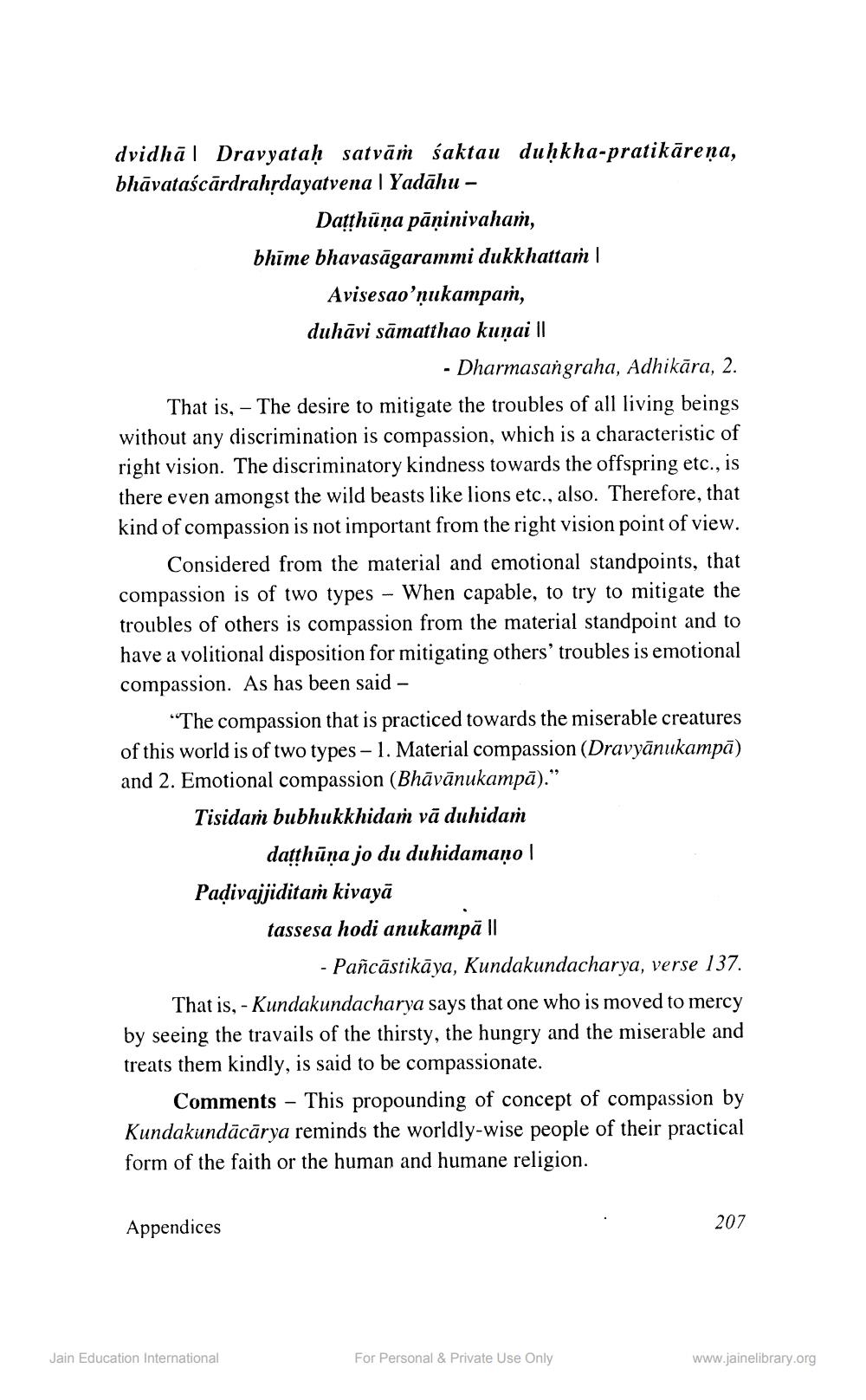________________
dvidhā| Dravyataḥ satvāṁ Śaktau duḥkha-pratikāreņa, bhāvataścārdrahrdayatvena | Yadāhu –
Datthüņa pāņinivaham, bhīme bhavasāgarammi dukkhattam ||
Avisesao’ņukampam, duhāvi sāmatthao kuņai ||
- Dharmasangraha, Adhikara, 2. That is, – The desire to mitigate the troubles of all living beings without any discrimination is compassion, which is a characteristic of right vision. The discriminatory kindness towards the offspring etc., is there even amongst the wild beasts like lions etc., also. Therefore, that kind of compassion is not important from the right vision point of view.
Considered from the material and emotional standpoints, that compassion is of two types - When capable, to try to mitigate the troubles of others is compassion from the material standpoint and to have a volitional disposition for mitigating others' troubles is emotional compassion. As has been said -
“The compassion that is practiced towards the miserable creatures of this world is of two types - 1. Material compassion (Dravyānukampā) and 2. Emotional compassion (Bhāvānukampā). Tisidam bubhukkhidam vā duhidam
datthūna jo du duhidamaño Padivajjiditam kivayā
tassesa hodi anukampā ||
- Pañcāstikāya, Kundakundacharya, verse 137. That is, - Kundakundacharya says that one who is moved to mercy by seeing the travails of the thirsty, the hungry and the miserable and treats them kindly, is said to be compassionate.
Comments - This propounding of concept of compassion by Kundakundācārya reminds the worldly-wise people of their practical form of the faith or the human and humane religion.
Appendices
207
Jain Education International
For Personal & Private Use Only
www.jainelibrary.org




